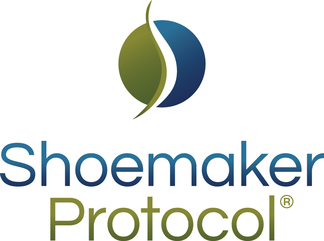Week of February 27, 2023

QUESTION: I just learned from one of my patients that Mycometrics is now offering a 5 species ERMI based on the HERTSMI-2 for only $125. Given your experience with the HERTSMI-2, do you think the 5 species version is good enough in most cases?
ANSWER: Mycometrics consistently has a better detection limit than other companies when done side to side. I don't know why that is. The use of HERTSMI-2 was designed for assessing risk of known patients for illness from re-exposure. It is not the same as asking IF the person is exposed. ERMI gives Group I and II that NIOSH adds together. If the number is over 30, then that is not good. The total ERMI is quite helpful looking at total fungal burden as well, so I get those at baseline and when I have confirmed the illness then I can see saving a lot of money by just asking for HERTSMI-2.
While high scores of both ERMI and HERTSMI-2 accurately predicted markedly
increased risk of recrudescence, only low HERTSMI-2 predicted safety from reexposure for patients who had prior CIRS-WDB. Use of HERTSMI-2 is inexpensive,
reproducibly reliable and predictive of mold associated re-exposure from water
damaged buildings (WDB), especially for sub-optimally remediated buildings.
It may be helpful to review the paper on ERMI/HERTSMI-2.
A free HERTSMI-2 SCORECARD is also available on site.
Interpretation of ERMI
QUESTION: I am trying to interpret my first few ERMI’s and nasal swabs – first, do the actual individual numbers on the ERMI for the various fungi mean anything (for example, Aureobasidium pullulans 16000, Cladosporium herbarum 44000) or is it just the ERMI itself that is the important value? And secondly, what constitutes a positive nasal culture – number of resistant organisms or types (ie pen R versus oxacillin R)? If it is the number of resistant organisms, how many?
ANSWER: Please take a look at the ERMI articles available on the site. Review as well the Power Points (1) on SAIIE; and (2) SAIIE meets ERMI. There is a huge amount of discussion that we could share on this topic. The talk I did at the International Mold meetings may be of interest.
The “HERTSMI-2 score looks at 5 organisms from group I in ERMI and assigns weight to the values. Any score over 10 is a problem; with moldy buildings routinely having scores of over 16. This construct thankfully ignores Cladosporium and Aureobasidium.
The key issue in nasal cultures is the resistance patterns. Count the number of distinct classes of antibiotic resistance. If two or more, statistically that is an organism that must be eradicated. The oxacillin (read this one as methicillin) resistance is quite common in these organisms.
3/ ERMI to Assess Remediation Success
QUESTION: Can the ERMI be used to assess remediation success? If so, is there a protocol such as how long to wait after the floors are cleaned before the test can be run again?
ANSWER: Yes. I use ERMI exclusively to assess effects of remediation. Wait one month to six weeks before repeating ERMI. I’ve had a number of patients with high ERMI scores, but mold inspectors can’t find the source.
4/ Can dust alone be the source of mold exposure
QUESTION: I have one case in which the ERMI score was high and the inspector didn’t find anything except that it was the dustiest house he had ever seen. Could the dust alone be the source of mold exposure?
ANSWER: The distribution of the ERMI tells what is making the problem. Sort the ERMI by Aw, water saturation, looking for the likely types of problems. Wallemia in HVAC is the big player in what appears to an intact building envelope. Dust itself has not been the source in any of my cases to date. I suppose if the dust were wet enough it could support fungal growth if there were cellulose in the dust too.
5/ Does outdoor mold increase ERMI scores?
QUESTION: I’ve had a few cases in which mold inspectors said the reason why my patients’ ERMI scores were high was because mold was brought in from the outside, especially moldy decks, via footsteps onto the carpet. Have you found this to be true at times?.
ANSWER: It is more the proximity to the door than what is tracked in by people or pets. I don’t know anyway to decide which is which however if the areas outdoors are tested and are similar to what is indoors.
6/ QUESTION: Would you say that sampling areas close to exterior doors can cause a falsely elevated ERMI? Are there other conditions that can lead to falsely elevated ERMIs?
ANSWER: ERMI was standardized in master bedroom and living room. There should be good reason to sample other places. The standard was designed to be done on about 5 grams of dust. Technically the results should be independent of total grams, but if an area with a lot of dust dominates the sample, then it could skew the results as deposition of dust is not random in all areas.